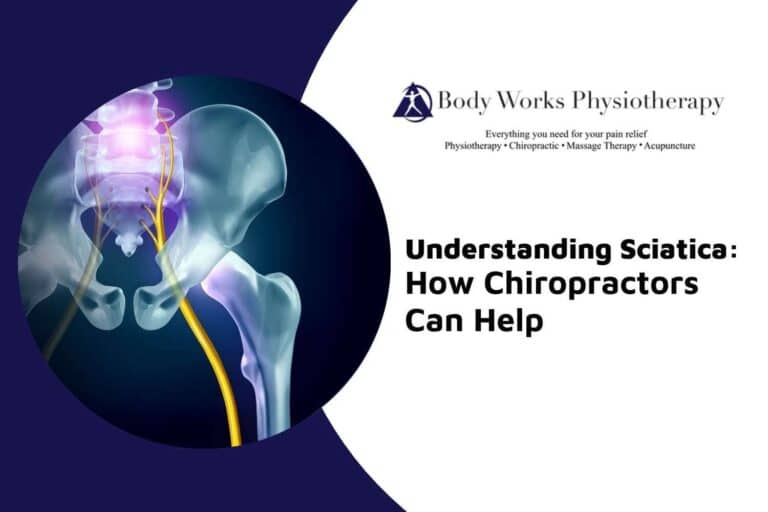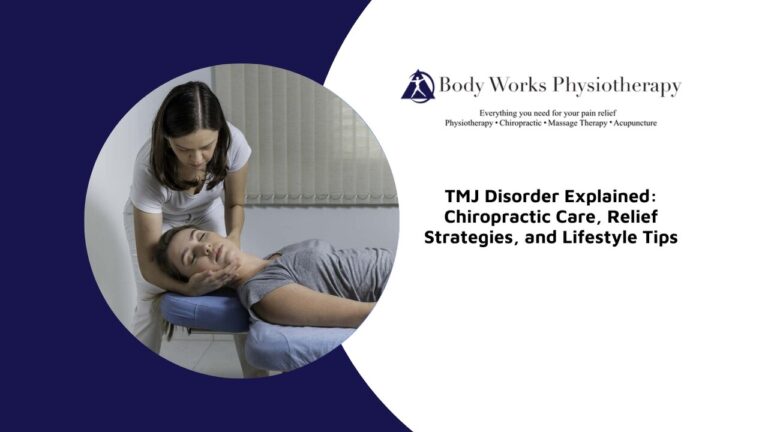
Neck pain can be a persistent and frustrating issue, impacting daily comfort, mobility, and overall quality of life. Whether it’s caused by prolonged screen time, injury, or postural habits, finding relief is essential for long-term well-being. Chiropractic care offers a natural, non-invasive approach to addressing neck pain by targeting its root causes. Through specific techniques, targeted therapies, and preventive care, chiropractic treatments provide both immediate relief and long-term solutions. This blog explores how chiropractic care can help reduce neck pain, improve posture, and support a healthier spine.
Alleviating Neck Pain: The Role of Chiropractic Care
Chiropractors focus on treating the spine and restoring proper joint function, which can significantly reduce neck pain. Key benefits include:
- Relieving Muscle Tension and Nerve Pressure: Chiropractic care helps to release built-up muscle tension and relieve pressure on compressed nerves, which can be a primary cause of neck pain. By decompressing affected nerves, this approach can reduce symptoms like tingling, numbness, or radiating pain into the shoulders and arms, offering relief for individuals who may be experiencing nerve-related discomfort.
- Restoring Mobility to Stiff Joints and Improving Range of Motion: When neck joints become stiff, it limits the range of motion, making even simple movements uncomfortable. Chiropractic techniques target these stiff joints, gently increasing mobility and flexibility. Restored joint movement not only improves daily comfort but also helps prevent future stiffness and injury by maintaining joint health and flexibility.
- Enhancing Blood Flow and Reducing Inflammation: Chiropractic techniques stimulate blood circulation to the affected areas, which promotes the delivery of nutrients and oxygen essential for tissue healing. Increased blood flow can help reduce inflammation in the muscles and joints around the neck, accelerating the body’s natural healing process and providing relief from chronic inflammation-related pain.
- Correcting Posture Issues: Poor posture can place continuous strain on the neck muscles and spine, contributing to chronic pain and discomfort. Chiropractors work with clients to correct posture by addressing issues in the spine and offering guidance on maintaining proper alignment throughout daily activities. Improved posture reduces the stress on neck muscles and helps prevent pain from recurring.
Regular chiropractic care addresses the root cause of neck pain, offering lasting relief and an improved quality of life. By focusing on spinal health and functional alignment, chiropractic treatments can provide sustainable, drug-free solutions to neck pain, allowing individuals to enjoy greater mobility and comfort in their daily lives.
Common Causes of Neck Pain
Chiropractors treat a variety of conditions and issues that can lead to neck pain, including:
- Poor Posture From Prolonged Screen Time or Desk Work: Sitting for extended periods, especially with poor posture, places significant strain on the neck muscles and upper spine. Over time, this can lead to muscular imbalances and increased tension, causing discomfort and chronic pain if not addressed.
- Whiplash Injuries Caused by Car Accidents: Whiplash occurs when a sudden impact, such as a car accident, forces the neck to move rapidly back and forth. This sudden motion can strain muscles, ligaments, and joints, leading to persistent pain, reduced range of motion, and stiffness in the neck.
- Cervical Disc Degeneration or Herniated Discs: Over time, the discs in the neck may deteriorate due to wear and tear, causing reduced cushioning between vertebrae. Herniated discs may also compress nearby nerves, leading to pain, numbness, or tingling in the neck, shoulders, or arms.
- Pinched Nerves Due to Spinal Dysfunction: When vertebrae experience dysfunction, they can place pressure on nearby nerves, causing pain, tingling, or weakness. This nerve compression can lead to localized neck pain or radiate discomfort to other parts of the body, including the shoulders and arms.
- Muscle Strains From Sports or Improper Sleeping Positions: Physical activities or awkward sleeping postures can strain the neck muscles, especially if proper support is lacking. This can result in soreness, muscle spasms, and limited neck mobility until the strained muscles are allowed to heal.
- Stress and Tension, Which Can Create Tightness in the Neck and Shoulders: Emotional and physical stress often leads to tightened neck and shoulder muscles as a natural response. Over time, this tightness can restrict movement and contribute to chronic pain, particularly if stress is not managed effectively.
Identifying the underlying cause of neck pain allows chiropractors to develop effective treatment plans tailored to each individual. By addressing the specific source of discomfort, chiropractic care can provide targeted, lasting relief.
Chiropractic Techniques Used to Treat Neck Pain
Chiropractors use a variety of techniques to treat neck pain, including:
- Spinal Manipulation: Gentle, targeted movements to realign the vertebrae and relieve nerve pressure. These manipulations also stimulate blood flow, helping the body naturally reduce inflammation and promote healing, while restoring proper function to ease muscle tension.
- Soft Tissue Therapy: Massage and trigger point therapy to release muscle tension. This technique addresses knots and tightness in muscles, improving blood flow, reducing stiffness, and alleviating discomfort from prolonged tension in the neck area.
- Cervical Traction: Stretching the neck to relieve pressure on spinal discs and nerves. Cervical traction increases space between vertebrae, which helps reduce nerve compression and can be beneficial for conditions like herniated discs or pinched nerves.
- Postural Correction Exercises: Training clients to maintain proper posture throughout the day. These exercises help prevent further strain by teaching techniques for balanced posture, whether sitting, standing, or moving, to keep the spine functioning well.
- Lifestyle Recommendations: Suggestions for ergonomic setups and sleep positions to prevent pain recurrence. Chiropractors offer guidance on optimizing desk setup, adjusting sleep positions, and other habits to support spine health and prevent neck strain.
These techniques work together to promote healing, relieve pain, and restore mobility.
How Many Chiropractic Sessions Are Needed to Relieve Neck Pain?
The number of chiropractic sessions needed to relieve neck pain varies based on the severity of the pain and the underlying condition causing it. For individuals experiencing mild pain or tension, relief may typically be achieved in about two to four sessions. Those dealing with moderate pain, such as that caused by whiplash injuries, might require around six to eight sessions to feel significant improvement. For chronic pain or disc-related issues, the process is often longer, with ten or more sessions spread over several weeks to address the deeper and more persistent aspects of the condition.
While most people start to experience some relief within the first few visits, ongoing treatment often brings further, gradual improvements. Each chiropractic plan is tailored to meet the individual needs of the individual, so your chiropractor will develop a personalized treatment plan based on your specific progress and overall goals for pain management and mobility.
Assessing the Safety of Chiropractic Care for Neck Pain: Are There Any Risks Involved?
Chiropractic care for neck pain is generally safe when performed by an experienced chiropractor. However, as with any treatment, there are some potential risks, including:
- Temporary Soreness or Stiffness After a Session: Mild discomfort is a common, short-lived effect of chiropractic techniques, as muscles and joints adapt. This soreness usually subsides within 24 to 48 hours and can be managed with ice, gentle stretches, or over-the-counter pain relievers if needed.
- Headaches in Rare Cases Following Treatment: Some individuals may experience mild headaches due to shifts in muscle tension and spinal function. These headaches are typically short-lived and may improve as the body adjusts to the new positioning. Staying hydrated and resting after treatment can help alleviate this effect.
- Risk of Injury If Techniques Are Performed Incorrectly: Certain medical conditions, such as osteoporosis, fractures, or severe arthritis, make the spine more vulnerable to injury. Chiropractors take these conditions into account, using alternative techniques or referring clients to other healthcare professionals if chiropractic techniques aren’t suitable.
Your chiropractor will conduct a thorough assessment to ensure that chiropractic care is appropriate for you and will adjust the treatment to minimize risks. This assessment may include a detailed health history or physical exams to customize care and prioritize safety.
Preventing Future Neck Pain: The Role of Chiropractic Care
Regular chiropractic care plays a crucial role in maintaining spinal health and preventing future episodes of neck pain. By focusing on preventive care, chiropractic care supports improved posture, which helps reduce strain on the neck and lessens the risk of pain related to poor alignment. Increased flexibility and mobility are also key benefits, as they help keep the neck joints healthy and capable of a full range of motion, which is essential for avoiding stiffness and discomfort over time.
In addition, chiropractic sessions provide ongoing correction of spinal dysfunction that could otherwise lead to chronic stiffness or recurring pain. Through these sessions, chiropractors help keep the spine functioning properly, which eases the overall burden on the neck and upper back. Education on lifestyle habits is another preventive benefit; chiropractors often guide clients on ergonomic changes and proper sleeping positions to reduce daily strain on the neck.
Many people find it beneficial to schedule periodic “maintenance” sessions, allowing them to sustain neck and spine health and prevent the recurrence of pain. These sessions offer a proactive approach to spinal health, enabling clients to enjoy lasting comfort and mobility in their daily activities.
Treating Neck Pain: When to Consider Seeing a Chiropractor
There are several signs indicating that you may benefit from seeing a chiropractor for neck pain. If your pain persists for more than a few days, even after rest and the use of over-the-counter remedies, it could be a sign that chiropractic care is needed. Experiencing stiffness, limited movement, or headaches associated with neck tension are also indicators that professional chiropractic support may provide relief and restore mobility.
If you’ve sustained an injury, such as a sports-related strain or whiplash from an accident, chiropractic treatment can be a helpful, non-invasive option to aid in recovery. Many individuals also seek chiropractic care if they prefer a drug-free approach to pain management, especially when other treatments, like physiotherapy or medications, haven’t provided sufficient relief. Chiropractic care is particularly effective in cases where neck pain is caused by spinal dysfunction or nerve-related issues, as these can be directly addressed with targeted care.
For conditions such as fractures or infections, however, other medical interventions may be more appropriate. A chiropractor can help you identify whether chiropractic care is suitable for your specific situation or if another treatment route may be necessary.
Leave Neck Pain Behind
If neck pain is holding you back from enjoying life to the fullest, it’s time to explore effective, personalized solutions. At Body Works Physiotherapy in Scarborough, our team is committed to helping you find lasting relief and restore comfortable movement with skilled chiropractic care. With a focus on customized treatment plans, we address your unique needs to bring long-term relief and prevent future discomfort. Ready to take the next step toward a pain-free life? Contact us today to book a consultation and discover how chiropractic care can transform your well-being.





